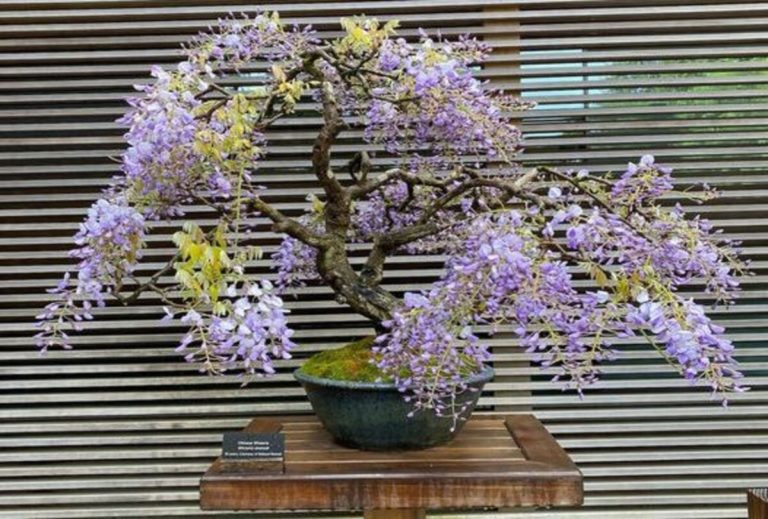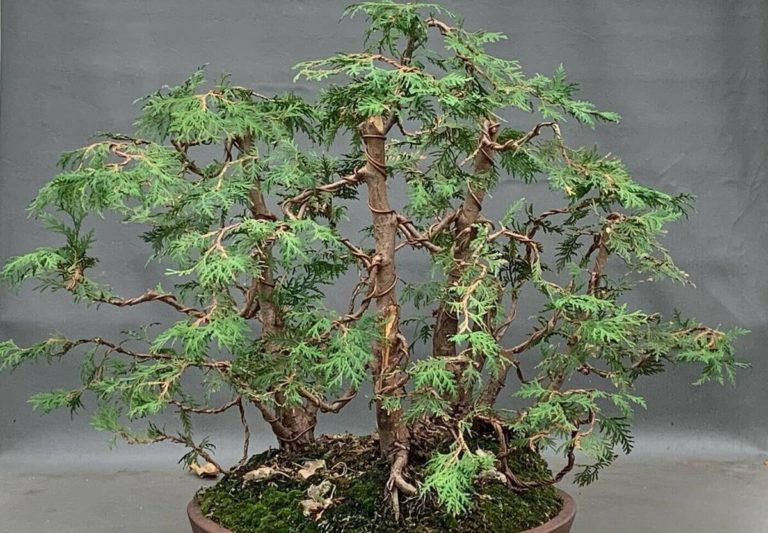Euonymus Bonsai: The Ultimate Statement Piece for Your Home or Garden
Euonymus bonsai are a type of miniature tree that is grown and cared for in small containers. These trees are created by training the branches and roots to grow in a certain way and are prized for their beauty and unique form.
What is Euonymus Bonsai?
Euonymus bonsai are small trees and shrubs that belong to the Euonymus group. A bonsai is a small tree that is grown and made in a small pot. The goal is usually to make the tree look beautiful and unique.
Euonymus bonsai may be made by teaching the tree’s branches and roots to grow in a certain direction and maintaining its form via trimming and wiring procedures. These bonsai trees are regarded for their gorgeous leaves and distinctive growth patterns, and bonsai maintenance may be a lucrative and fun pastime for those interested.
History and Origins of Euonymus Bonsai
Euonymus bonsai is believed to have originated in China and Japan, where bonsai cultivation has been practiced for centuries. Numerous shrubs and small trees belonging to the Euonymus genus have been used for bonsai cultivation.
Some species of Euonymus, such as Euonymus japonicus and Euonymus fortunei, are indigenous to East Asia. For millennia, people in that region have relied on their therapeutic qualities and cultivated them as decorative plants due to their attractive appearance.
Bonsai cultivation in Japan became popular during the Edo period (1603–1867), and it is likely that Euonymus bonsai was also developed during this time. Today, Euonymus bonsai is a popular choice among bonsai enthusiasts worldwide and continues to be cultivated and admired for its unique beauty and form.
Euonymus Bonsai and their Symbolism
Euonymus bonsai, like many other types of bonsai, can carry symbolic meaning. In Japan, bonsai is often associated with Zen Buddhism and the appreciation of nature. The careful cultivation and shaping of a bonsai tree can represent the discipline and patience required to achieve spiritual growth.
Euonymus bonsai, in particular, may symbolize resilience and endurance. This is due to the hardy nature of many species of Euonymus, which can withstand harsh conditions and recover from damage. In addition, the unique and twisted form of some Euonymus bonsai may represent the twists and turns of life, and the ability to adapt and thrive despite adversity.
In Chinese culture, Euonymus is associated with good luck and protection. It is often used in Feng Shui practices to ward off negative energy and attract positive energy to a space. A Euonymus bonsai in a home or office may be seen as a symbol of prosperity and protection.
Overall, the symbolism of Euonymus bonsai can vary depending on cultural and personal beliefs. However, many bonsai enthusiasts appreciate these miniature trees for their beauty and the sense of peace they can bring to a space.
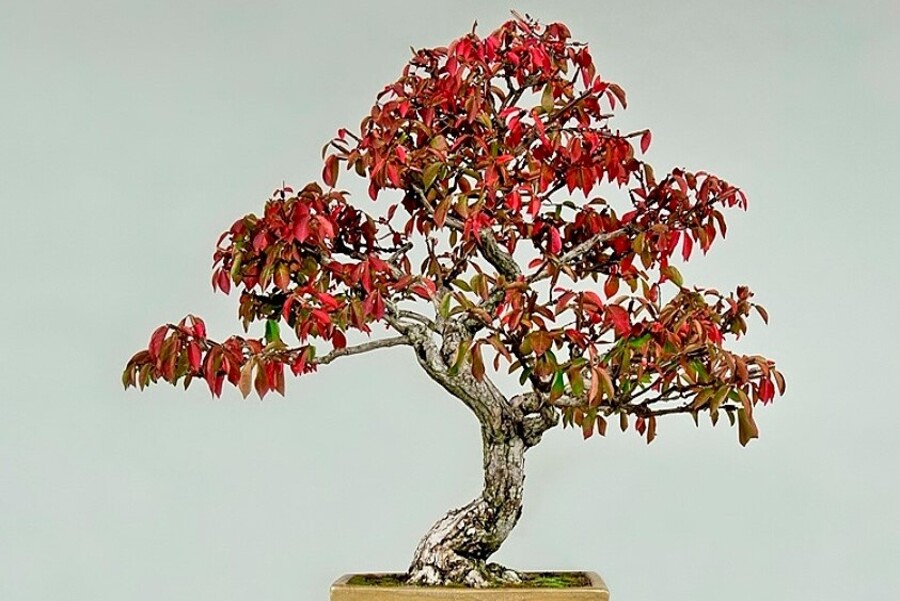
Characteristics of the Euonymus Bonsai
The Euonymus bonsai is a unique and attractive small tree renowned for its peculiar growth patterns and brilliant leaves. Here are some of its important characteristics:
- Size: Euonymus bonsai typically reach a height of 1-3 feet, making them a small but impactful addition to any indoor or outdoor space.
- Leaves: Depending on the species, Euonymus bonsai can have different leaf shapes, sizes, and colors. Common leaf colors include green, variegated green and white, and yellow, with some species having reddish fall foliage.
- Bark: The bark of the Euonymus bonsai can range in color from light gray to brown and can have interesting textures and patterns.
- Growth habit: Euonymus bonsai can have a variety of growth habits, including upright, cascading, and twisting forms.
- Care requirements: Proper care of Euonymus bonsai involves regular watering and fertilization, as well as protection against pests and diseases. They prefer well-draining soil and a humid environment.
- Styling: Euonymus bonsai can be trained into different styles, such as formal upright, informal upright, slanting, cascade, and group planting styles. Pruning and wiring techniques are used to shape and maintain the tree’s form.
Overall, Euonymus bonsai is a beautiful and unique addition to any bonsai collection, with a variety of interesting characteristics and care requirements.
Types of Euonymus Bonsai
There are various Euonymus species that are often utilized in bonsai horticulture. Each species has its own set of traits and maintenance needs. Here are some of the most popular Euonymus bonsai varieties:
Euonymus japonicus: This plant is endemic to Japan and has oval-shaped, pointed glossy green leaves. It is a popular choice for novices since it can be trained in a number of techniques.
Euonymus fortunei: This Chinese plant has little green leaves that turn crimson in the fall. It is a tough and versatile animal that may be trained to do a variety of tasks.
Euonymus alatus: This species is native to China and Korea and is known for its unique corky bark and bright red fall foliage. It can be trained into an upright or cascading form.
Euonymus kiautschovicus: This species is native to China and has glossy green leaves and small white flowers that bloom in the summer. It can be trained into a formal or informal upright form.
Euonymus hamiltonianus: This species is native to China and has small, oval-shaped leaves that turn yellow in the fall. It can be trained into an upright or cascaded form.
There are also several cultivars of Euonymus bonsai available, such as ‘Silver King’ and ‘Moonshadow’, which have variegated foliage and unique growth patterns.
Overall, the different species and cultivars of Euonymus bonsai offer a variety of colors, textures, and growth habits, making them a popular choice among bonsai enthusiasts.
How to Grow an Euonymus Bonsai
Growing a Euonymus bonsai requires patience, talent, and meticulous care. To help you started, here are some high-level guidelines:
Choose a healthy specimen: Look for a young plant with a straight trunk, healthy foliage, and good root structure. Avoid plants with insect damage or signs of disease.
Select a suitable container: Euonymus bonsai prefer shallow containers with good drainage. Choose a container that is slightly larger than the plant’s root ball, and has plenty of room for growth.
Provide proper soil: Euonymus bonsai prefer a well-draining soil mix that is rich in organic matter. A mix of 50% akadama, 25% pumice, and 25% lava rock is a common choice.
Water regularly: Euonymus bonsai require consistent moisture but do not like to sit in water. Water thoroughly when the top of the soil feels dry to the touch, and allow the excess water to drain out.
Fertilize regularly: Euonymus bonsai benefit from regular feeding with a balanced fertilizer, such as a 10-10-10 or 20-20-20 formula. Feed every two weeks during the growing season, and reduce feeding in the winter.
Prune and shape regularly: Euonymus bonsai require regular pruning and shaping to maintain their desired form. Use sharp, clean tools to remove unwanted branches and foliage, and wire the branches into place to achieve the desired shape.
Protect from pests and diseases:Euonymus bonsai are sensitive to pests such as spider mites and scale insects, as well as diseases such as powdery mildew. Regularly inspect the plant for symptoms of infestation or disease, and adopt necessary management measures.
Overall, growing a Euonymus bonsai requires a commitment to regular care and attention. With patience and skill, you can cultivate a beautiful and unique miniature tree that will bring joy and serenity to your home or garden.
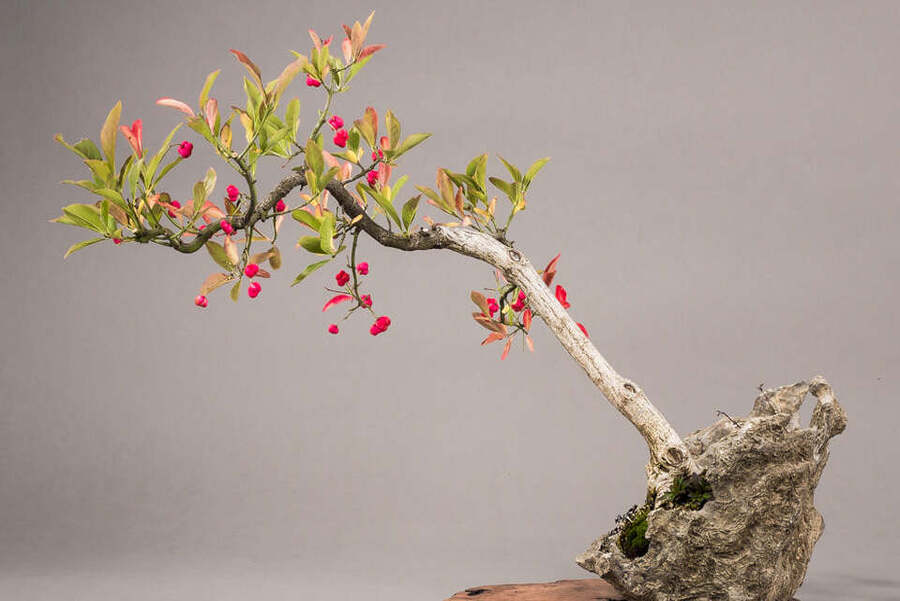
Benefits of Euonymus Bonsai
In addition to their aesthetic appeal, Euonymus bonsai offer several benefits:
- Stress relief: The practice of bonsai cultivation can be a calming and meditative activity that can help reduce stress and promote relaxation.
- Air purification: Like other plants, Euonymus bonsai can help purify the air by removing pollutants and releasing oxygen.
- Educational value: Bonsai cultivation can be a great way to learn about horticulture, plant anatomy, and the principles of design and aesthetics.
- Home decor: A well-crafted Euonymus bonsai can be a beautiful and unique addition to any home decor.
- Connection to nature: Bonsai cultivation can help foster a deeper connection to the natural world, providing a sense of peace and harmony.
Overall, cultivating a Euonymus bonsai can be a rewarding and fulfilling experience that offers both aesthetic and practical benefits. Whether you are a seasoned bonsai enthusiast or a beginner, a Euonymus bonsai is a great choice for a unique and beautiful miniature tree.
Styling and Design of Euonymus Bonsai
Styling and designing a Euonymus bonsai requires an understanding of the principles of bonsai aesthetics and an eye for balance and proportion. Here are some tips to help you create a beautiful and unique Euonymus bonsai:
Choose a style: Euonymus bonsai can be styled in several traditional bonsai styles, such as formal upright, informal upright, slanting, cascade, or semi-cascade. Choose a style that complements the natural shape and growth habit of your plant.
Consider the trunk: The trunk is the backbone of the bonsai tree and should be straight, tapered, and proportionate to the size of the tree. Remove any unwanted branches or foliage to emphasize the trunk’s shape and texture.
Balance the branches: The branches of the Euonymus bonsai should be balanced and proportionate to the size of the trunk and the overall design of the tree. Use wiring techniques to shape the branches into the desired form, and prune regularly to maintain balance.
Create depth: Use layers of foliage and branches to create depth and perspective in your Euonymus bonsai. Position the branches at different angles to create an illusion of depth and movement.
Add accents: Add accents such as rocks, moss, or small figurines to enhance the beauty and interest of your Euonymus bonsai. These accents should complement the overall design of the tree and add a sense of harmony and balance.
Overall, styling and designing a Euonymus bonsai requires patience, skill, and attention to detail. With practice and experimentation, you can create a beautiful and unique miniature tree that reflects your personal style and aesthetic preferences.
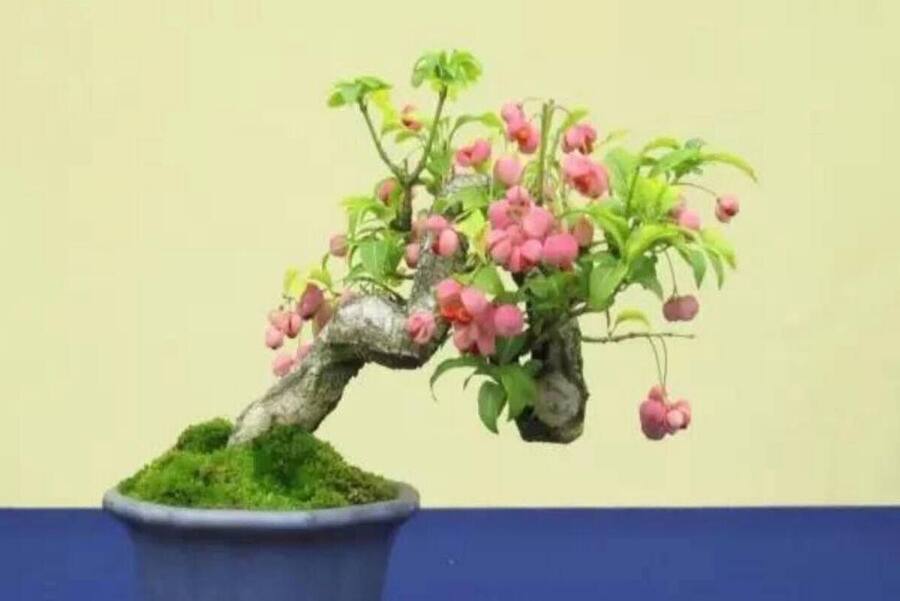
How to Care for and Maintain Euonymus Bonsai
Caring for a Euonymus bonsai requires proper watering, fertilizing, pruning, and pest management. Here are some tips to help you care for and maintain your Euonymus bonsai:
- Watering: Euonymus bonsai prefer soil that is damp yet drains well. Water your bonsai when the soil seems somewhat dry to the touch, but don’t overwater or let the soil get soggy.
- Fertilizing: Use a balanced fertilizer to feed your Euonymus bonsai during the growing season. Fertilize every two to three weeks, reducing frequency during the winter months when growth slows.
- Pruning: Regular pruning is essential to maintaining the shape and health of your Euonymus bonsai. Prune back new growth to maintain the desired shape and size of the tree, and remove any dead, damaged, or diseased branches.
- Repotting: Euonymus bonsai should be repotted every two to three years to refresh the soil and promote healthy growth. Repot in the spring, when the plant is actively growing.
- Pest management: Euonymus bonsai are susceptible to pests such as scale, spider mites, and aphids. Inspect your bonsai regularly for signs of infestation, and treat with a natural or chemical insecticide as needed.
- Sunlight and temperature: Euonymus bonsai require bright, indirect sunlight and moderate temperatures between 60 and 75 degrees Fahrenheit. Protect your bonsai from hot or cold drafts, and provide adequate humidity with a tray of water or a humidifier.
By following these care tips, you can help ensure the health and vitality of your Euonymus bonsai and enjoy its beauty for years to come.
Euonymus Bonsai Care Sheet
| Aspect | Brief Care Tips |
| Watering | Water when soil is slightly dry, avoid over-watering |
| Fertilizing | Use balanced fertilizer, fertilize every 2-3 weeks |
| Pruning | Regular pruning to maintain shape and remove dead branches |
| Repotting | Repot every 2-3 years in spring |
| Pest Management | Inspect regularly, treat with natural or chemical insecticide |
| Sunlight | Bright, indirect sunlight, protect from direct sunlight |
| Temperature | Moderate temperature between 60-75°F, protect from drafts, provide humidity |
By following these care tips, you can help ensure the health and vitality of your Euonymus bonsai and enjoy its beauty for years to come.
Conclusion
The Euonymus bonsai is a lovely and unusual plant that may provide tranquillity and peace to any indoor or outdoor location. With its brilliant colors and small dimensions, the Euonymus bonsai is an excellent choice for both novice and seasoned bonsai lovers.
By following the maintenance instructions in this article, you can help preserve the health and lifespan of your Euonymus bonsai and enjoy its beauty for years to come. Whether you want to bring a touch of nature to your home or workplace, or you want to learn more about the art of bonsai maintenance, the Euonymus bonsai is an excellent choice.
FAQ:
Q: What is a Euonymus Bonsai?
A: A Euonymus Bonsai is a small, decorative tree that has been trained to grow in a particular shape or style. It is a type of bonsai that is grown from a Euonymus plant.
Q: What are the benefits of growing an Euonymus Bonsai?
A: The advantages of planting a Euonymus Bonsai include adding natural beauty to your home or business, increasing air quality, lowering stress, and boosting your entire feeling of well-being.
Q: What kind of soil is best for Euonymus Bonsai?
A: Euonymus Bonsai thrive in well-draining, nutrient-rich soil. A mixture of sand, peat moss, and perlite is recommended for optimal growth.
Q: How often should I water my Euonymus Bonsai?
A: Water your Euonymus Bonsai when the soil feels slightly dry to the touch. Avoid overwatering or allowing the soil to become waterlogged, as this can damage the roots.
Q: How do I prune my Euonymus Bonsai?
A: Regular pruning is essential to maintaining the shape and health of your Euonymus Bonsai. Prune back new growth to maintain the desired shape and size of the tree, and remove any dead, damaged, or diseased branches.
Q: How often should I fertilize my Euonymus Bonsai?
A: Use a balanced fertilizer to feed your Euonymus Bonsai every two to three weeks during the growing season. Reduce the frequency during the winter months, when growth slows.
Q: How do I prevent pests from attacking my Euonymus Bonsai?
A: Inspect your Euonymus Bonsai on a regular basis for indications of infestation and treat as needed with a natural or chemical pesticide. Keeping your bonsai healthy and well-maintained might also assist to keep pests at bay.
Q: What is the best location for my Euonymus Bonsai?
A: Euonymus Bonsai require bright, indirect sunlight and moderate temperatures between 60 and 75 degrees Fahrenheit. Place your bonsai in a spot with plenty of natural light, but protect it from direct sunlight, which can scorch the leaves.
Also Read:



